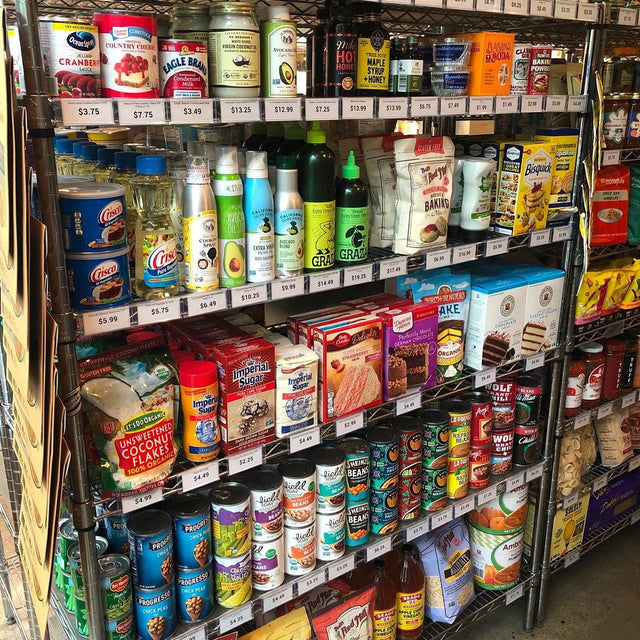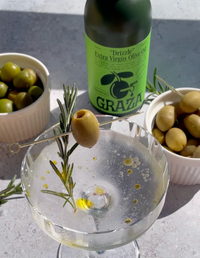
Olive Oil vs Peanut Oil: Your Questions Answered
When it comes to cooking fats, we love to have a variety on hand. While extra virgin olive oil (EVOO) might be our favorite (olive oil company bias), there are a number of excellent cooking fats that differ in use cases and flavor profile. Don't limit your kitchen or taste buds to just one!
Olive Oil: The Breakdown
Olive Oil, especially the beloved EVOO, is prized for its rich and fruity flavor. EVOO's flavor punch also packs a plethora of health benefits, primarily coming from its monounsaturated fats and antioxidants.
Hearth Health: Those monounsaturated fats can help to lower bad cholesterol (LDL) and raise good cholesterol (HDL). A win for your heart!
Antioxidants: EVOO is full of polyphenols––compounds that help to reduce inflammation and fight oxidative stress––the stress that ages your cells faster than you'd like.
Flavor: Olive oil, EVOO in particular, brings about a fresh, fruity, and sometimes peppery flavor that shines in the kitchen. Whether you're using Drizzle on a plate of fresh tomatoes or roasting veggies with Sizzle, EVOO has a flavor kick that adds an extra oomph to every dish!
Best Uses: EVOO has a slightly lower smoke point than peanut oil (about 420F), so it's best for sautéing, roasting, drizzling. It's not meant for deep frying, but is great for everyday cooking needs.
Peanut Oil: The Breakdown
Peanut oil, on the other hand, is your go-to when high heat is in the mix. Known for its high smoke point (around 450-475F), peanut oil is a favorite in Asian cuisines for wok cooking and stir-fried dishes. It's neutral in flavor with a slightly nutty undertone, so it lets your ingredients do the talking.
High-Heat Cooking: Peanut oil's high smoke point makes it ideal for frying, searing, or stir-frying without worrying about the oil burning or breaking down. It's perfect for dishes where a crispy finish is key.
Mild Flavor: Unlike olive oil, peanut oil doesn't bring a strong flavor to the dish. This is great if you want the tase of your food to shine through without the interference from the oil.
Nutritional Profile: Peanut oil has a higher ratio of monounsaturated fats to saturated fats. It's also a good source of Vitamin E, another heart healthy antioxidant.
When to Use Olive Oil
For Flavor: Olive oil's rich taste makes it perfect for dishes where you want the cooking fat to accent the ingredients. Think salad dressings, meat marinades, roasted veggies, etc.
For Health: When you're looking for a heart-healthy fat with antioxidant and cholesterol lowering properties, EVOO is your best bud.
When to Use Peanut Oil
For High Heat: Whether you're frying chicken, making tempura, or doing a quick stir-fry, peanut oil is excellent for heats above 450F+
For a Neutral Flavor: When you want the food's natural flavors to take center stage, peanut oil's mildness won't interfere.
Can You Substitute One for the Other?
Technically, yes—but it depends on the dish. You could sauté with peanut oil or fry with olive oil, but you might lose out on what each does best. Olive oil’s lower smoke point means it won’t hold up as well to high heat frying, and peanut oil’s neutral flavor won’t give you the richness that olive oil brings.
The Bottom Line
Your kitchen may need a bottle of both! EVOO is your go-to for everyday cooking and when you crave that rich, deep olivey flavor. Peanut oil is a great option for some of those higher-heat dishes like a delectable stir-fry or deep fried chicken. With both in your pantry, you're kitchen is ready to take on any dish!

















